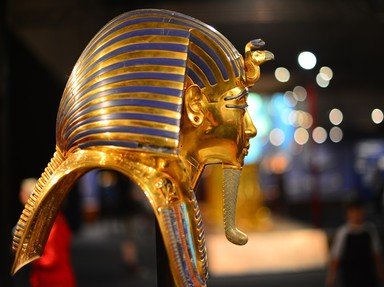Quiz Answer Key and Fun Facts
1. What basic criteria did Hatshepsut have to meet in order to be considered a god's wife?
2. Hatshepsut was a member of the 18ty Dynasty that ruled Egypt during the New Kingdom. Which other famous pharaoh was a member of her family?
3. Hatshepsut led an well-known expedition to Punt, which expanded Egypt's trading network. Which of the countries listed below was likely part of ancient Punt?
4. There is evidence that when Hatshepsut led the expedition to Punt, she returned with live trees, hoping they would thrive in Egypt. What kind of trees were planted at her mortuary temple at Deir el-Bahari?
5. One of Hatshepsut's ambitious buildings projects was the embellishment of the complex at the Temple of Karnak. Added to the entrance to the temple were twin pillars called?
6. Another one of Hatshepsut's building projects was a mortuary temple complex at Deir el-Bahari. What significance did this site have for the ancient Egyptians?
7. What does the funeral complex at Deir-el Bahari, which was built by Hatshepsut, have in common with the Parthenon in Athens?
8. It is well-known that at times Hatshepsut wore the traditional false beard that was a symbol of the pharaoh's sovereignty. What other symbol of pharoah's power is typically included on her statues?
9. Which of the following statements most correctly summarizes the reign of Hatshepsut?
10. On the engraving from the Red Chapel at Karnak, Hatshepsut is shown, along with her successor, Thutmose III. Was she his mother?
Source: Author
ponycargirl
This quiz was reviewed by FunTrivia editor
bloomsby before going online.
Any errors found in FunTrivia content are routinely corrected through our feedback system.
